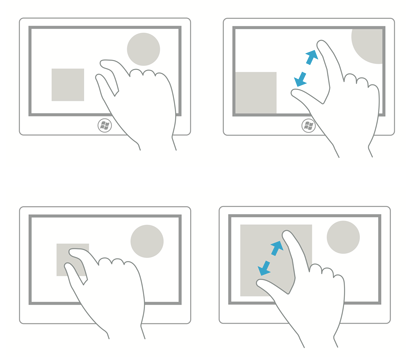On Learnability Theory and gestural interfaces.

How do humans learn to speak the language of machines? In order to communicate with computers, interfaces embody a set of semantics and grammar that humans must learn in order to command the machine to do his or her bidding.
Microsoft Gestures, Manipulations, and Interactions
Learnability Theory attempts to define principles of language acquisition. The renowned linguist Steven Pinker explains in a paper on language acquisition:
Learnability theory has defined learning as a scenario involving four parts (the theory embraces all forms of learning, but I will use language as the example):
A class of languages. One of them is the “target” language, to be attained by the learner, but the learner does not, of course, know which it is. In the case of children, the class of languages would consist of the existing and possible human languages; the target language is the one spoken in their community.
An environment. This is the information in the world that the learner has to go on in trying to acquire the language. In the case of children, it might include the sentences parents utter, the context in which they utter them, feedback to the child (verbal or nonverbal) in response to the child’s own speech, and so on. Parental utterances can be a random sample of the language, or they might have some special properties: they might be ordered in certain ways, sentences might be repeated or only uttered once, and so on.
A learning strategy. The learner, using information in the environment, tries out “hypotheses” about the target language. The learning strategy is the algorithm that creates the hypotheses and determines whether they are consistent with the input information from the environment. For children, it is the “grammar-forming” mechanism in their brains; their “language acquisition device.”
A success criterion. If we want to say that “learning” occurs, presumably it is because the learners’ hypotheses are not random, – but that by some time the hypotheses are related in some systematic – way to the target language. Learners may arrive at a hypothesis – identical to the target language after some fixed period of time; – they may arrive at an approximation to it; they may waiver among a – set of hypotheses one of which is correct.
Every time a design team adds a new gesture or changes an existing one, these four principles play themselves out in interaction design everyday, for billions of people.